-
Arren Soroko wrote a new post on the site MIS4596 – Section 3 Spring 2015 9 years, 10 months ago

Disruptive Innovation and Education
In this Forbes article, author Michael Horn talks about his interaction with Clay Christensen and how they used disruptive innovation to suggest ways for public schools to innovate. Horn states that the education system that we have today is, in many ways, built as a sorting system. “Those students who can’t keep up with the pace are sorted out at various intervals – an arrangement that worked fine for many in the past, but in today’s knowledge economy is no longer OK.” Horn suggested that online education is a way for public schools to cater to the individual needs that each student has instead of treating them all as if they are exactly the same. Horn also states that online education could also disrupt higher education. He states that it could severely affect some institutes a lot more than others but the ones that aren’t affected that much could adopt it as sustained innovation. Do you think that online education is more disruptive towards k-12 learning or higher education? Do you think that this could be the future of learning? Will it affect any other industries?
-
Brittany M Cougle wrote a new post on the site MIS4596 – Section 3 Spring 2015 9 years, 10 months ago
Earlier this week someone posted an article about why CIOs can’t sell enterprise collaboration tools and today I saw an article where IT leaders gave tips on how to drive enterprise collaboration and ensure […]
-
Interesting, collaboration is key for growing business!
-
Interesting, collaboration is key for growing business!
-
I work for Dorma Door Controls and our main location in Germany has recently implemented a collaboration tool that is new to our business, and it is called Yammer. Yammer is essentially Facebook for organizations, but it is owned by Microsoft. Since it is relatively new to the company, the entire business hasn’t really adopted it and has been using it to its full potential yet, but it allows for employees all over the globe to communicate and share documents privately or publicly and it has sort of been successful so far, but it is still too early to measure its effectiveness.
-
I think that the easier the training for a collaboration tool the better. Most employees tend to freak out when there is a new technology tool presented to them. As we learned in 3535, some employees don’t adapt to change so easily. So the easier the process or the more they understand the collaboration tool, the more comfortable they are with adopting a new tool. Making this new collaboration tool successful in the end. The company that I’m interning now is big on collaboration and have devoted several SharePoint sites to collaboration tools. Prior to launching these sites, they sent out emails with training material and had presentations on how to use these tools. They wanted to make sure they provided enough information, before launching these sites.
-
-
Arren Soroko wrote a new post on the site MIS4596 – Section 3 Spring 2015 9 years, 10 months ago
An Investor’s Guide to Disruptive Innovation
In this article, Jason Stutman talks about the 5 most disruptive technologies of last year and touches on some of the industries that they will disrupt. Some of […]
-
This is a really fascinating article, considering the technological advancements that have already come before us and have enhanced the working world so tremendously. A technology that I think has a lot of potential to be disruptive would have to be the smart watch coming through by storm. Apple just released their first version of it, and it will only be a matter of time before other companies release their own version with more and more capabilities to enhance the corporate world.
-
-
Arren Soroko wrote a new post on the site MIS4596 – Section 3 Spring 2015 9 years, 10 months ago

Making An Effective Presentation
In this Forbes article, author Bill Rosenthal explains the three main components to delivering a successful and effective presentation. He first highlights that the three most important parts to any presentation is: (1) making an emotional connection with the audience, (2) present with energy, and (3) spell out the payoff for the audience. Rosenthal states that conciously or not, an audience forms a bias for or against a presenter within seconds. The key to this step is ensuring that you come across as likale and trustworthy. He says that the key to being likable is simple: show you like the audience and they will reciprocate, and once that is acheived, the trust will come. The next step is to present with energy. Rosenthal states that the way to get the audience excited about your presentation is by showing them your own excitement. The last step is spelling out the payoff for the audience. Rosenthal states that you should never assume that the audience will understand the take away as quickly as you, the presenter, has. He says that you need to state your key facts and then reiterate them in different ways so that they can sink in. Seeing as how we are all going to be giving presentations on our projects, I felt that this article could be helpful. Can you think of any other techniques that you can use to incorporate Rosenthal’s three key components within your own presentations?
-
As a good amount of our class will be entering the working world very soon, there is a really good chance that at some point we will be making presentations to our colleagues. These tips are very useful in that sometimes I feel as if I have been to,d hundreds of different ways to present, and this really sums it up well for me. Another technique I have in mind would be in terms of the slide deck itself, and to keep it interesting and short.
-
One technique that I like is using some type of “grabber” in the beginning of the presentation to grab the audiences attention. Whether it be getting the audience involved or showing something shocking, this gets the audience engaged immediately, and can make the presentation more interesting. My favorite way to do this is to use impressive numbers that people are unaware of. For example, “The market for commerce is $X billion dollars.” This is particularly applicable in business presentations. I think this ties well with Rosenthal’s first point of making an emotional connection with the audience.
-
I feel that the three components discussed definitely go hand in hand with a successful presentation. We all have a very important presentation coming up soon. We should look at these 3 things in our groups, so that we can incorporate them into our overall presentations and it’s not just one person in the group doing this. That way it will give the presentation an overall benefit rather than having one person in the group present a fraction of what can be accomplished if the whole team emotionally connects with the audience, presents with energy, and demonstrates the payoff.
-
-
Brittany M Cougle wrote a new post on the site MIS4596 – Section 3 Spring 2015 9 years, 10 months ago
This article talks about how there is a growing global community of digital citizens that are demanding more from businesses, and that meeting these demands can be make-or-break for the business. Jeremy […]
-
Arren Soroko wrote a new post on the site MIS4596 – Section 3 Spring 2015 9 years, 10 months ago
How Innovations Become Better And Cheaper
In this Forbes article, the authors Paul Nunes and Larry Downes expand on the idea of disruptive innovation and talk about Big Bang Disruption. The key difference […]
-
Jacklin Altman wrote a new post on the site MIS4596 – Section 3 Spring 2015 9 years, 11 months ago
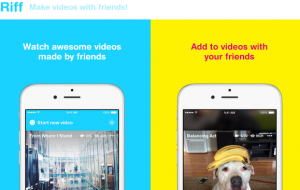
In an attempt to make videos “stickier” on social media, Facebook recently debuted its own video app called Riff. This Forbes article details the app and the logic behind it.
The way the app works is that users […]-
This app sounds pretty fun and interesting although as a Facebook user, I have never heard of Riff. I do think the app is similar to Vine and Snapchat stories but it may not last long. Riff may be a fun app for a year or so but I think eventually people will stop using it. It also depends how frequently you go on Facebook. I rarely go on Facebook or social media so I would probably use the app once to test it out but that’s about it. I do see many people using the app as it is similar to Vine and that was a huge success.
-
I think this is another attempt at Facebook capitalizing on other successful apps. Facebook is slowly declining in popularity and trying to regain its market share through other ideas that have already been created. I don’t believe that it will be able to retain users, considering Snapchat and Vine’s popularity. I believe that facebook has shifted to an older segmentation and new add-ons such as these are not appealing to that market.
-
I am not so sure that this app will be successful on facebook’s part. I think it might be a bit too complicated in comparison to snapchat and vine, and that people will want to stick to what they already have and are used to. However, if Facebook were to buy out these companies and then add in this feature as a bonus to what the people already know, I could see it working out.
-
-
Brittany M Cougle wrote a new post on the site MIS4596 – Section 3 Spring 2015 9 years, 11 months ago
This article talks about how Apple’s new Apple Watch could disrupt various industries, including the fitness wearable and luxury watch industries. Apple’s low-end Apple Watch Sport will likely disrupt the […]
-
I do think that the watch industry is underestimating the apple watch a bit. I don’t think that it can compete with true luxury watches (Cartier, Rolex, etc), because if someone wants a watch covered in diamonds that they saw someone famous wearing, they aren’t gonna go for the Apple Watch. However, there is a bit of a cult surrounding Apple and everything they produce, so I think that a lot of people will buy an Apple Watch just because it’s an Apple product. I absolutely think the fitness wearables industry should be worried, as the Apple Watch Sport, if priced competitively, far outranks the competition in terms of functionality.
-
I agree with Dan. I don’t believe Apple can disrupt the luxury watch market. A smartwatch has a life cycle, a watch by Rolex or Omega does not. You are expected to purchase a new smartwatch when the next iteration comes around, while the value of the luxury watch increases as it ages. Apple watches may be more functional, but no one buys a mechanical watch for it’s functionality.
As for the fitness wearable angle? I agree, Apple’s brand name in technology products can move mountains and this is one of them. -
I do not think Apple will disrupt the luxury watch industry because they are different customer segments. When I think of a luxury watch I think of high end classy watch that you would wear to work or if you are going somewhere nice. For Apple to create a luxury watch, thats more technologically based. The apple watch has a lot more functions and you can do a lot more. I think Apple will take away the meaning of a luxury watch. Its more for a fashion statement rather than a watch that does everything from a touch of a finger.
-
I don’t think the luxury watch industry should feel threatened by Apple’s new watch. People who buy luxury watches, like Rolex, are going for a particular look or style, which Apple’s smart watch will not be able to compete with. Some luxury watches also appreciate in value over time while an Apple smart watch will only depreciate over time as its technology and capabilities become obsolete. Wearing this smart watch would also convey the wrong message over time. People wear luxury watches as a status symbol, a nice Rolex 20 years ago will most likely still be looked at as a fine watch now. Where as a first generation smart watch would be looked at as a low end watch.
-
-
Jacklin Altman wrote a new post on the site MIS4596 – Section 3 Spring 2015 9 years, 11 months ago
I found this article where the author lists what he believes to be the top 5 risks for IT projects. They are as follows:
1. Other projects getting prioritized over yours, thus taking funding away.
2. […]
-
Amanda M Rossetti wrote a new post on the site MIS4596 – Section 3 Spring 2015 9 years, 11 months ago

http://gizmodo.com/youtubes-ready-to-blow-your-mind-with-360-degree-videos-1690989402
Youtube has released the option to post 360 degree videos. On the browser you click and drag and can look around the person filming and on the phone you move you’re phone to see the whole area. There are some issues right now but they claim it will be fixed soon. For example you have to use a python script to make it actually work in your browser. I think this is a great sustaining innovation though, because they have been doing flat videos for over 10 years. There are not a lot of consumer cameras that can shoot in 360 degrees thought.
What do you think of this? Do you think people will use it with the python necessary? What about without it?
-
I really like the idea of Youtube releasing the option to post 360 degree videos because its different compared to the ordinary flat videos. I do think people will use it with the python script if they are truly interested in post 360 degree videos. Once one person posts a video everyone is going to start doing it.
-
I like the idea as well, because it does show sustaining innovation, and I think there are plenty of people who will find it interesting and use it. However, I think that having to use Python might be a turn off for people. Once they make it so that anyone can use the 360 feature any time, then I think it will catch on much faster.
-
-
Jacklin Altman wrote a new post on the site MIS4596 – Section 3 Spring 2015 9 years, 11 months ago
-
I like the idea of detailing all of my accomplishments throughout the year and listing them out because I would be better prepared for my performance review and it is easier to keep track all of the accomplishments. Sometimes its hard to sit and think everything you have accomplished and of course your boss won’t remember everything you have accomplished because you are not the only one on the team.
-
I like the idea of the self evaluation. It provides a back and forth conversation that allows you to counter negative aspects of your review. However, I can see it backfiring if your reviewer does not agree with your points and they may view it as you questioning their authority. In addition, when most people talk about their achievements, they blow them out of proportion resulting in less objectivity when it comes to self evaluations. What I think might be better for larger organizations is having several reviewers. More times than not, a person will work with a number of managers in a given year. It may be more objective to average the reviews of a number of managers so if a person is a consistently poor performer, there is verification from multiple sources.
-
-
Jacklin L Altman created the doc Project Plan 9 years, 11 months ago
-
Jacklin Altman wrote a new post on the site MIS4596 – Section 3 Spring 2015 9 years, 11 months ago
-
You’ve raised a great point. I found the evaluation of information in real-time other than historically to be the most interesting and eye-opening; that is definitely beneficial to businesses. To answer your question (which actually prompted me to write my post on artificial intelligence), I have an answer that goes along with real-time monitoring. This article here (http://blog.xively.com/xively-infographic-future-of-the-iot/) provides an infographic on the future of IoT, and one key benefit for businesses (or, “doing good”) will be that “organizations will predictively meet business needs through intelligent, automated action driven by previously inaccessible insights from the physical world”. The example given was a refrigerator that has sensors in it connected to a scientific lab that is able to dispense enzymes for the purpose of accelerating experiments. The interconnectivity of devices allows the business to automatically recognize when revenue is created and restocking is needed, with the process ultimately allowing the devices to automatically predict upcoming experiments and alert scientists to new enzyme lines. This is just one of many examples of potential benefits (which would save money on operating expenses), and would also be an example of an application for a smart grid in a “smaller sense”.
-
-
Brittany M Cougle wrote a new post on the site MIS4596 – Section 3 Spring 2015 9 years, 11 months ago
This article talks about how Mark W. Johnson (Clayton Christensen’s business partner) says that disruptive innovation is not about being better than what currently exists. He says disruptive innovation “transforms a complicated, expensive product into one that is easier to use or is more affordable than the one most readily available.You know an innovation is disruptive when a new population has access to products and services that previously were only affordable for the few or the wealthy.”
A subset of disruptive innovations called catalytic innovations is introduced and described as “providing good-enough solutions to inadequately addressed social problems.” An example would be the MinuteClinic which provides affordable walk-in health services for common health problems. The idea of the MinuteClinic lead to the creation of other walk-in clinics that serve people who cannot afford health care.
As business students we usually focus on the profits to be earned from a new idea or technology, but I think it’s interesting to look at the social changes we can achieve. What other examples can you think of where disruptive innovation was used for social causes? How do you think disruptive innovation can be used for social change in the future?
-
Though not as noble as the minute clinic, I think that personal health trackers (Nike+ FuelBand, FitBit, etc) are an example of disruptive innovation working to make things more accessible. Before these personal health trackers, people had to see dieticians and sleep specialists to learn if they were eating and sleeping well. Now, these trackers, which are conveniently worn on the wrist as a small bracelet, allow people to take control of their own health by tracking food intake, exercise, and sleep patterns for under $200, which is a one time cost just to buy the band. Everything else is conveniently linked up through a free app, thus making these health trackers a disruptive innovation that’s inciting some positive social change.
-
-
Amanda M Rossetti wrote a new post on the site MIS4596 – Section 3 Spring 2015 10 years ago

Photo by Tsahi Levent-Levi 
Disruptive Innovation An opportunity for growth
Khattab Al-Ali outlines what businesses should do in the face of disruptive innovation and how they can use them to grow. He recommends not trying to use an innovation that your business model cannot support as well as not following competitors into new business segments if they have expertise you don’t have. He says that listening to customers for what innovations to invest in is a good idea but not to give the customers everything they want on a whim, it does not always make good business sense. He also says when evaluating disruptive innovation you need to not only focus on the standard metrics. Some innovations have consequences that people would not originally think. Finally he says that when addressing the disruptive innovation you should separate it from your main business as to not add risk to your current business.What do you think businesses should do when evaluating new innovations? How do you think the organization should structure these endeavors?
-
Arren Soroko wrote a new post on the site Arren Soroko 10 years ago
My part-time role at Dorma is as an IT Service Delivery Specialist. Some of my daily responsibilities are tending to the Helpdesk and troubleshooting problems with different types of software and hardware that […]
-
Jacklin Altman wrote a new post on the site MIS4596 – Section 3 Spring 2015 10 years ago
In light of our learning about disruptive innovation and reading about companies like Apple who have used it to their advantage, I found an article claiming that disruptive innovation is not a strategy and […]
-
I agree with the idea. Although it is possible to create a culture of innovation and creativity, it is flawed logic to assume that an organization can plan on disrupting markets on call. What can be done is to cultivate the employees mindsets and approaches and provide them with the resources and empowerment necessary to create new things. Those creations, even if they take place, aren’t guaranteed to be monetized. In plain terms, you can only lead a horse to the water.
-
I agree with Mohamed that some companies will be more innovative than others, and that directly depends on their culture. However, even though Steve Jobs didn’t intend to redefine the music industry, that’s because it’s really difficult to determine if a product is going to be successful when the general public doesn’t even know they need it. He knew the iPod’s design, bundling package (software with hardware), music store and business model were unique and extremely innovative, but other than making predictions based on some preliminary research, you will never know a products’ success until you launch it. I don’t think that disruptive innovation is a sustainable business model because that would require predicting the future. However, I think you can strive for sustaining extreme innovation, which will most likely disrupt a market eventually if it is successful in creating that culture.
-
-
Brittany M Cougle wrote a new post on the site MIS4596 – Section 3 Spring 2015 10 years ago
Last week we talked about how everything is measurable and it is necessary for organizations to measure the value of IT so that the entire organization sees the importance of IT. This author of this article speaks with Doug Laney, research vice president for Gartner Inc., who says there is a gap between the realized and potential value of information. Laney gives his six models for how businesses can treat data as an asset in order to help close that gap.
Non-financial Methods
1. Intrinsic value of information – breaks data into characteristics such as accuracy, accessibility, completeness, then rates each characteristic and tallies for final score.
2. Business value of information – measures data characteristics in relation to business processes.
3. Performance value of information – measures data impact on key performance indicators over time.
Financial Methods
4. Cost value of information – measures the cost of “acquiring or replacing lost information” as well as lost revenue caused by loss of data
5. Economic value of information – measures how data contributes to revenue
6. Market value of information – measures the revenue generated by “selling, renting or bartering” corporate data.
Do you agree with the methods Laney suggests? Are their other ways you would measure the value of data? Which methods do you think would be most effective at convincing your CEO that data is an asset to your company?
-
I agree that these are all great ways of expressing the value of data to a CEO. I think that the non-financial measures will be harder to communicate, however. In IT we tend to understand the value of data and what would happen without it better than other areas of the business. Trying to communicate the intrinsic value or business value, however, is difficult if the person does not already know that data is important. I think that the cost value and market value will be much better because you can show some hard numbers as to why data is important. I think the most effective measure that Laney states is the Economic value of information. This is a hard thing to measure but trying the data directly to the company’s bottom line will be very persuasive.
-
-
Jacklin Altman wrote a new post on the site MIS4596 – Section 3 Spring 2015 10 years ago
With our own progress reports coming due each week, I thought I would share this article that has some pointers for how to effectively communicate the status of a project. The author, Rob Redmond, states that to write an excellent status report you need to understand the three components of status, how to write brief details, and what key data is needed by management.
He describes the three components of status as:
Overall: The overall project health
Milestones: Major accomplishments with accompanying dates
Issues: Obstacles to successful project completionHe then goes on to explain the concept of “brief details,” in which he suggests that when reporting a status you:
Use bullet points instead of prose
Avoid unnecessary titles
Shorten sentences as much as possible
Avoid adverbsLastly, key project data that should be communicated includes:
Project Name
Overall health (red, yellow, green can be used here)
Current completion (in %)
Expected project completion
If you are ahead/behind schedule, if so, how much
Issues you faceDo you agree with the author’s three-point structure for status reports? What do you think goes into writing a good status report? How have your status reports evolved after taking MIS 3535?
-
I agree with the author’s three-point structure for status reports. All status reports should include the overall project health so that others can get a sense of whether the project is going well or not, right away. Major accomplishments should be tracked to assure stakeholders that the work is being done in a timely fashion and can be very encouraging. Issues should definitely be communicated because if the issues are unknown to others, there is no way they will know if there is something that they can help with.
A good status report should definitely use the green, yellow, red approach to illustrate the health of the project so that it draws attention to what needs to be focused on and less attention to what doesn’t. A good status report should also be written concisely. After taking MIS 3535, I’ve gotten better at writing status reports. I am briefer in the details of what is happening throughout the various phases of the project and am elaborating on details that may be unclear.
-
-
Amanda M Rossetti wrote a new post on the site MIS4596 – Section 3 Spring 2015 10 years ago
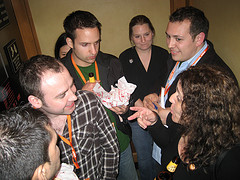
Cliff Ennico says your elevator pitch should do three things, while not making three big mistakes. He says in your pitch you should introduce yourself, talk about the most important feature of your business plan, and get the person excited and wanting to hear more from you. These are very similar to the things we talked about in class. He says that you should not describe the “skills rather than the purpose”. Many of the people who went over time in their elevator pitches got too into the details of their application. The next thing he said people do is not tell an interesting story. If people are not interested in what you have to say they will tune you out. We talked in class about opening up with the problem and following with how your application fixes that problem. The last thing Ennico says people do is not rehearsing or being unprepared. While we all know what our applications do fitting that information into 30 seconds is difficult without preparing first. Sitting down and thinking of what three things you want to convey will help get your message across.
Do you agree with Ennico’s points?
What things do you think should be included in a good elevator pitch?
What things do you think people tend not to do well when it comes to elevator pitches?
-
I agree with Ennico in that a good elevator pitch needs to get the other person interested, needs to convey the main point of the idea being pitched, and should absolutely start with an intro. I think that a good elevator pitch should be short and sweet, spoken clearly and with a confident voice, and it should have anywhere from 1 to 3 “big things” that you want the reader to remember. As we saw in class, some applications lend themselves well to a 3-point presentation, whereas some could be explained in one or two points. I think that some common mistakes that people make when giving elevator pitches is rushing through them because they’re nervous, trying to regurgitate memorized information, and trying to cram too many details into what should be a quick presentation.
-
I agree with Ennico’s points. You should definitely introduce who you are so that people know who they are speaking with and it also makes it more personal. You should definitely sell what you are talking about to the other person and leave them wanting more so that it can lead to a follow-up discussion for some time in the near future. What people tend not to do well when giving elevator pitches is focus on the purpose rather than focusing on the latest and greatest features. People tend not to tell a short story that is compelling for its targeted audience. Working through nervousness is another thing that people tend to not do well. When people are nervous, they tend to talk to fast, get stumped if they stutter, fail to give eye contact, and sway back and forth excessively which negatively impacts the elevator pitch.
-
I agree with Ennico’s points that you should introduce yourself, talk about the most important feature of your business plan, and get the person excited and wanting to hear more from you. if you are giving a 30 second pitch, it should be interesting because you want to capture the audiences attention. I think its important to tell a brief story in the pitch and tell an anecdote because that is what captures everyones attention. Being enthusiastic also helps because if the audience sees you are excited and passionate what you are talking about then so will they. Things I think people tend not to do well is practice. It is hard delivering a 30 second pitch but, with practice I believe it can be done. When people don’t practice they usually tend to get nervous and lose their train of thought.
-
- Load More
Connect and innovate with an elite information systems program
Footer
MANAGEMENT INFORMATION SYSTEMS
Fox School of Business
Temple University
210 Speakman Hall
1810 N. 13th Street
Philadelphia, PA 19122


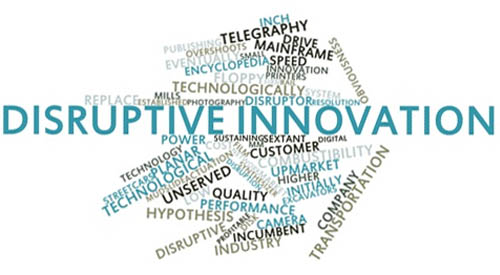

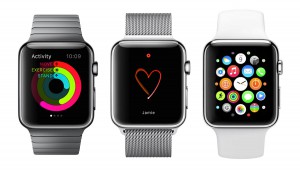
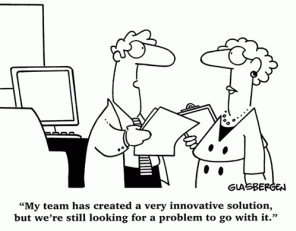
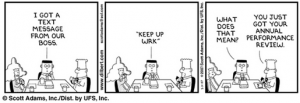


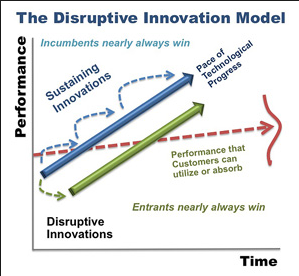


I feel as though it could disrupt both. k-12 education needs a disruption like this, catering to individual children’s needs and learning abilities so they do not get pushed through school without really learning the fundamentals of early education. A child does need to socialize however so combining a mix of online education and physical education would be a perfect fit for youth education.
When it comes to higher education, a disruption is already happening quickly. Some of the most talented people in the technology industry are self taught. In year to come, a degree may not be needed if a person can learn how any type of information they desire through the internet.
I think that it is more disruptive towards k-12 learning. I do agree with Angela on a child needing to socialize, especially at a young age. That’s why I would wait and offer students online classes when they reach middle school. In addition, I would make the online classes completely optional allowing for both traditional and online classes. I would make it optional because some students might have a hard time adapting to online classes, which could potentially lower their grades. Online education is already a part of higher education and there are students who incorporate that into their schedules and others who only take online classes. I think it would bring more awareness to other online learning websites like Blackboard or Lynda.com. This could potentially harm the textbook publishers because students would use e-books instead.